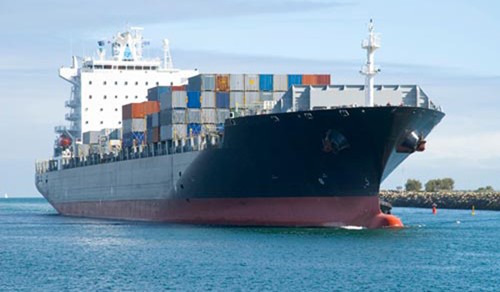|
Vietnamese shipping meets raging waves
on open sea
Selling ships is
a solution that helps shipping firms survive the current difficulties, but it
is not the way they can follow to earn their living.
Deputy Minister of Transport Nguyen
Hong Truong said Vinashinlines has successfully sold 90 percent of the ships
anchored overseas for many days. The last one, Hoang Son 28, still cannot be
sold due to some problems with the procedures, but will be sold this year.

Everything put on sale
Incurring big losses and having to
sell ships is the thing suffered by nearly all Vietnamese shipping firms over
the last three years.
A member of the Vietnam Ship owners’
Association noted that while Vietnamese firms rushed to buy new ships in
2003-2007, they all offer to sell ships now.
In September 2011, Vitranschart JSC
decided to sell Phuong Dong 3 and Phuong Dong 1 for VND117 billion to offset
the loss.
With the accounts payable worth
trillions of dong by the end of the third quarter of 2012, DDM asked for the
shareholders’ permission to sell some ships. However, the 2012 shareholders’
meeting did not approve the plan.
DDM plans to get the turnover of
VND288 billion this year, but foresees the loss of VND40 billion, including
the VND36 billion loss from the fleet development. Therefore, the board of
directors of the company may seek the permission to sell ships once again.
Vinaship has recently announced it
would sell some of the ships to have more working capital and restructure the
long term loans.
Nosco has also said it would sell
Long Bien ship. It expects the turnover of VND371 billion this year, but the
anticipated loss may be up to VND50 billion.
Do Xuan Quynh, Secretary General of
the Vietnam Ship owners’ Association, said it is a big waste and a big
economic damage to sell ships. However, he also said that this proves to be
the only thing ship owners can do when they have become penniless.
What to do to exist?
Head of the Vietnam Maritime Bureau
Nguyen Nhat has made some suggestions to help shipping firms recover and
develop when the global economy warms up again.
As for the projects on buying ships
with the capacity of 5,000 tons and more, the government should impose the 5
percent VAT rate and allows paying tax within five consecutive years since
the day of registration.
Meanwhile, ship equipment and
materials should be imposed zero percent in import tax and VAT for five
years. Especially, the goods owners using Vietnamese shipping services would
get the 10 percent import-export tariff reductions.
The government of
However, Vu Thanh Tu Anh from
Fullbright Economics Teaching Program pointed out that
Therefore, Anh believes that Vinashin
should focus on developing some shipbuilding complexes, rather than making
its presence in many different localities.
Source: NCDT
|
Thứ Bảy, 19 tháng 10, 2013
Đăng ký:
Đăng Nhận xét (Atom)
Không có nhận xét nào:
Đăng nhận xét